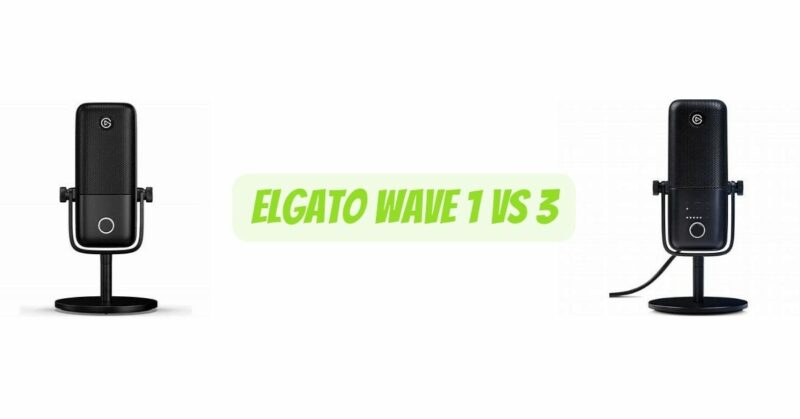Elgato, a renowned brand in the world of audio equipment, offers two popular USB microphones: the Elgato Wave 1 and the Elgato Wave 3. Both microphones are designed to deliver high-quality audio for content creators, streamers, and professionals. In this article, we will delve deeper into the features, performance, and specifications of the Elgato Wave 1 and Wave 3 to provide you with a comprehensive comparison, enabling you to make an informed decision when choosing between these two models.
Design and Build Quality
Both the Elgato Wave 1 and Wave 3 feature a sleek and modern design that complements any setup. The Wave 1 boasts a robust build quality with its durable materials, ensuring longevity and resistance to wear and tear. However, the Wave 3 takes it a step further with its all-metal construction, providing a premium feel and added durability. The Wave 3’s superior build quality gives it an edge in terms of longevity and overall sturdiness.
Audio Quality
Audio performance is a crucial aspect to consider when selecting a microphone. The Elgato Wave 1 features a 24-bit analog-to-digital converter, delivering professional-grade audio quality. With a frequency response range of 70Hz to 20kHz, it captures a wide range of frequencies, resulting in clear and crisp sound reproduction. On the other hand, the Wave 3 pushes the boundaries further with a 96kHz sample rate and a frequency response range of 20Hz to 20kHz. This extended range allows for capturing more detailed audio and richer tones, making it an excellent choice for professional audio production. Furthermore, the Wave 3 incorporates a built-in pop filter, which reduces plosive sounds and enhances vocal clarity. This feature is a significant advantage, especially for content creators and streamers who rely on their voice quality for engaging their audience.
Control Features
Both the Elgato Wave 1 and Wave 3 offer intuitive control features, allowing users to adjust various audio settings easily. The microphones feature capacitive sensor buttons on the front panel for quick and effortless mute/unmute operations. However, the Wave 3 takes it a step further by providing a multifunctional dial on the front panel. This dial enables real-time control over input gain, headphone volume, and even the microphone’s blend level with PC audio. This added control feature makes the Wave 3 more versatile and convenient, as users can make on-the-fly adjustments without needing to access software or additional settings.
Integration and Software
Both the Elgato Wave 1 and Wave 3 are seamlessly integrated with Elgato’s Wave Link software, which provides advanced control options for audio mixing. With the software, users can create virtual audio sources, adjust volume levels, and fine-tune audio parameters to meet their specific requirements. This integration allows for a seamless streaming and recording experience. However, the Wave 3 offers an additional software feature called “Clipguard.” This feature monitors the audio input in real-time and automatically adjusts the microphone sensitivity when loud sounds are detected. This prevents audio distortion and ensures a consistent and distortion-free recording. The inclusion of Clipguard gives the Wave 3 an advantage in terms of audio optimization and post-processing capabilities.
Price
Pricing is often a crucial factor when choosing between two similar products. The Elgato Wave 1 is generally more affordable than the Wave 3, making it an attractive option for those on a budget. It offers solid audio quality and essential control features without compromising on performance. However, considering the additional features and improved audio capabilities, the Wave 3 justifies its higher price point. For users who prioritize enhanced audio quality, advanced control options, and the inclusion of Clipguard, the Wave 3 offers a compelling package that is worth the investment.
Conclusion
Both the Elgato Wave 1 and Wave 3 are excellent choices for content creators, streamers, and professionals seeking high-quality USB microphones. The Wave 1 delivers impressive audio quality, essential control features, and solid build quality at an affordable price point. On the other hand, the Wave 3 elevates the audio experience with its premium build quality, wider frequency response range, and advanced control options like the multifunctional dial. Additionally, the inclusion of Clipguard in the Wave 3 ensures a distortion-free recording, enhancing its appeal for professionals and audiophiles. Ultimately, the choice between these two models will depend on your specific needs, budget, and the level of audio performance you desire. Whether you opt for the affordability of the Wave 1 or the advanced features of the Wave 3, both microphones offer exceptional audio quality and control, allowing you to elevate your content creation or streaming endeavors.

